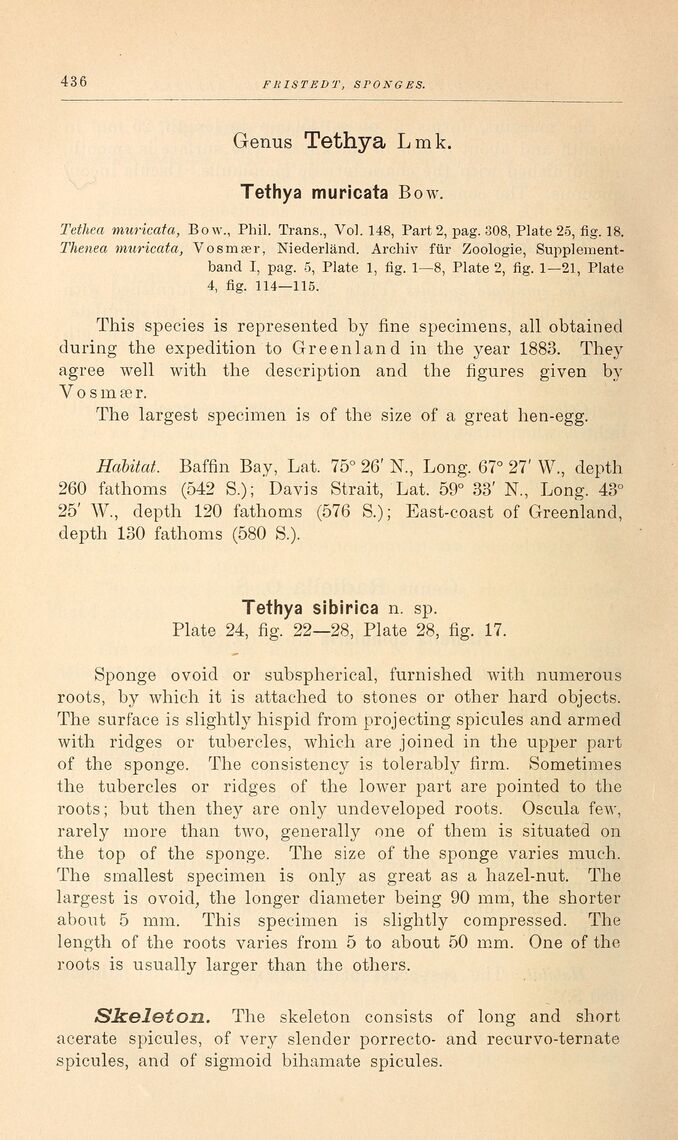
Full resolution (JPEG) - On this page / på denna sida - Sidor ...

<< prev. page << föreg. sida << >> nästa sida >> next page >>
Below is the raw OCR text
from the above scanned image.
Do you see an error? Proofread the page now!
Här nedan syns maskintolkade texten från faksimilbilden ovan.
Ser du något fel? Korrekturläs sidan nu!
This page has never been proofread. / Denna sida har aldrig korrekturlästs.
Genus Tethya L mk.
Tethya muricata Bow.
Tethea muricata, Bow., Phil. Trans., Vol. 148, Part 2, pag. 308, Plate 25, fig. 18.
Thenea muricata, Vosmrer, Niederländ. Archiv fur Zoologie,
Supplement-band I, pag. 5, Plate 1, fig. 1—8, Plate 2, fig. 1—21, Plate
4, fig. 114—115.
This species is represented by fine specimens, all obtained
during the expedition to Greenland in tlie year 1883. They
agree well with the description and the figures given by
V o s m se r.
The largest specimen is of the size of a great hen-egg.
Habitat. Baffin Bay, Lat. 75° 26’ N., Long. 67° 27’ W,, depth
260 fathoms (542 S.); Davis Strait, Lat. 59° 33’ N., Long. 43°
25’ W., depth 120 fathoms (576 S.); East-coast of Greenland,
depth 130 fathoms (580 S.).
Tethya sibirica n. sp.
Plate 24, fig. 22—28, Plate 28, fig. 17.
Sponge ovoid or subspherical, furnished with numerous
roots, by which it is attached to stones or other hard objects.
The surface is slightly hispid from projecting spicules and armed
with ridges or tubercles, which are joined in the upper part
of the sponge. The consistency is tolerably firm. Sometimes
the tubercles or ridges of the lower part are pointed to the
roots; but then they are only undeveloped roots. Oscula few,
rarely more than two, generally one of them is situated on
the top of the sponge. The size of the sponge varies much.
The smallest specimen is only as great as a liazel-nut. The
largest is ovoid, the longer diameter being 90 mm, the shorter
about 5 mm. This specimen is slightly compressed. The
length of the roots varies from 5 to about 50 mm. One of the
roots is usually larger than the others.
Skeleton. The skeleton consists of long and short
acerate spicules, of very slender porrecto- and rec-urvo-ternate
spicules, and of sigmoid bihamate spicules.
<< prev. page << föreg. sida << >> nästa sida >> next page >>